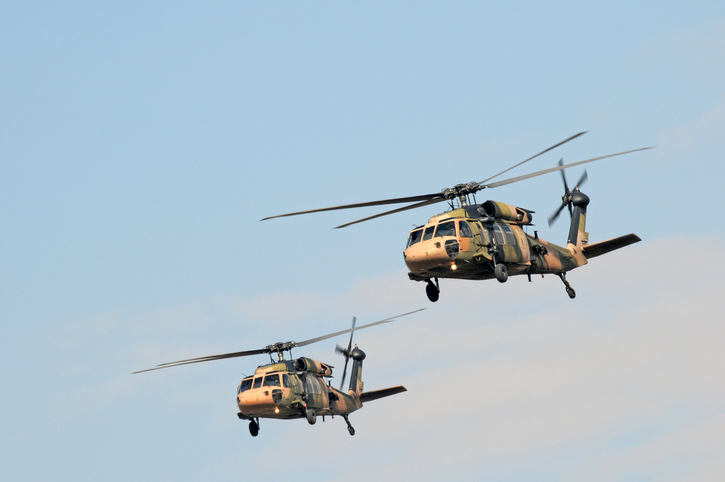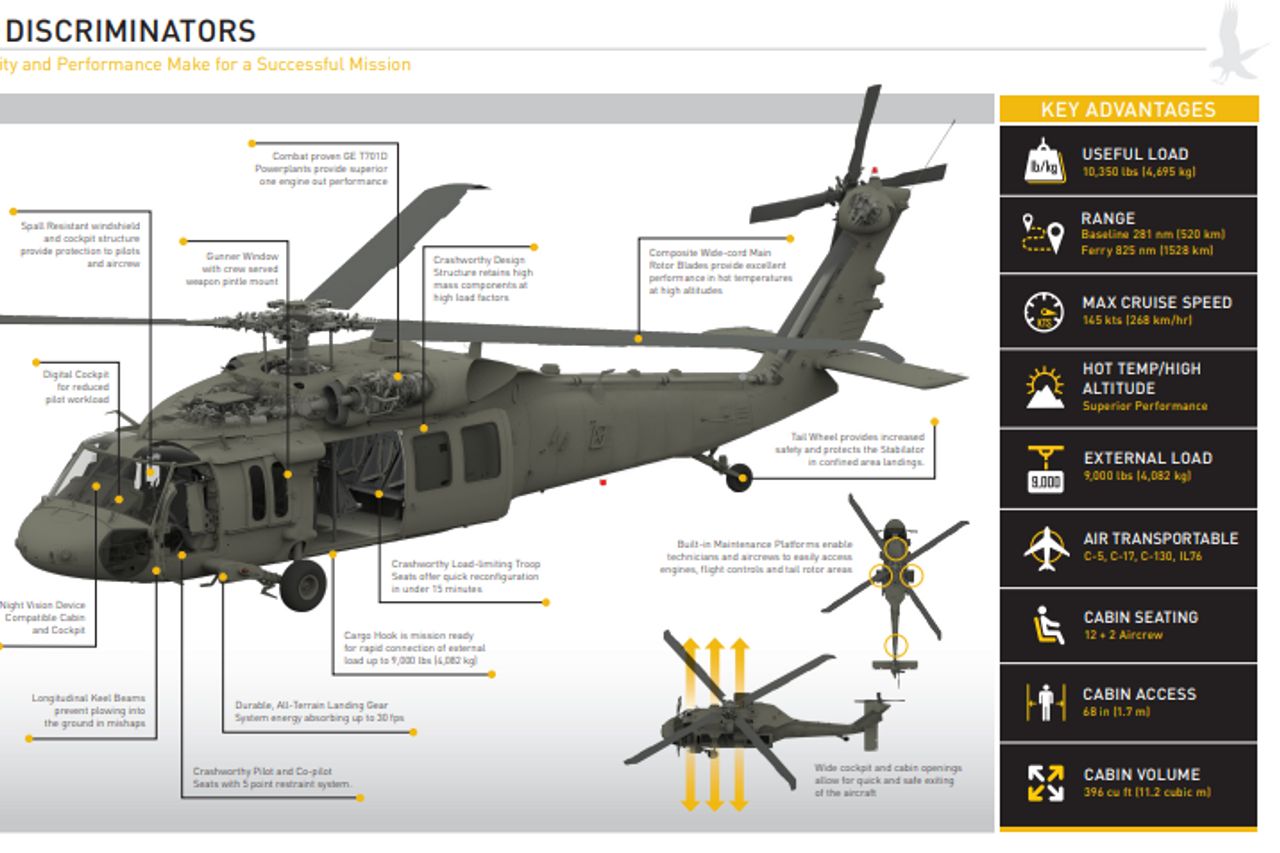The Sikorsky S 70 Helicopter: A Deep Study Its Design and Performance
The Sikorsky S 70 Helicopter: A Deep Study Its Design and Performance
Blog Article
High-Performance Multi-Role Rotorcraft Featuring Advanced Cabin Technologies and Integrated Sensing Unit Equipments
The world of rotorcraft modern technology has seen notable improvements in current times, especially in the realm of high-performance multi-role rotorcraft equipped with cutting-edge cabin innovations and flawlessly incorporated sensor systems. These advancements have not just increased the operational capacities of rotorcraft but have actually likewise significantly impacted contemporary air travel procedures on various fronts. From boosted objective versatility to improved functional efficiency, the merging of sophisticated cockpit innovations and integrated sensing unit systems has introduced a new age of possibilities for rotorcraft applications. In the following discussion, we will discover the evolution of rotorcraft innovation, look into the world of advanced cockpit technologies, and check out the implications of integrated sensing unit systems on the operational adaptability and efficiency of contemporary rotorcraft.
Evolution of Rotorcraft Technology
The advancement of rotorcraft modern technology has actually been marked by substantial advancements in aerodynamics, materials, and propulsion systems, shaping the capabilities and performance of modern-day rotorcraft. Additionally, developments in propulsion systems, consisting of more effective engines and innovative propulsion innovations, have actually allowed rotorcraft to achieve higher altitudes, faster rates, and better hauls.
These developments have not only changed the abilities of rotorcraft however have actually additionally broadened their applications across various industries, consisting of army, business, and emergency situation services. The constant development of rotorcraft innovation proceeds to drive development in the area, pressing the borders of what is possible and shaping the future of vertical flight.
Advanced Cockpit Innovations
Building upon the foundational developments in the rules of aerodynamics, materials, and propulsion systems, the realm of rotorcraft innovation now changes emphasis towards pioneering Advanced Cabin Innovations. The assimilation of innovative innovations within the cockpit environment plays an important duty in enhancing the operational capabilities, security, and efficiency of modern rotorcraft. sikorsky s 70. Advanced Cockpit Innovations incorporate a vast range of attributes developed to give pilots with enhanced situational understanding, structured data administration, and instinctive control interfaces
Among the vital developments in cabin style is the execution of glass cabins, which replace conventional analog determines with high-resolution screens. These electronic systems use personalized designs, real-time information combination, and enhanced readability, making it possible for pilots to accessibility critical information at a glance. Progressed avionics systems, such as fly-by-wire controls and boosted fact screens, are transforming exactly how pilots communicate with the aircraft, allowing for accurate control and enhanced decision-making capacities.


Integrating sophisticated cockpit developments not just boosts pilot efficiency yet likewise contributes to general goal effectiveness and safety and security in complicated operational atmospheres. By leveraging state-of-the-art technologies within the cabin, rotorcraft makers are setting brand-new criteria for functional quality and goal success.
Integrated Sensor Systems
With the advancement of rotorcraft innovation, the integration of sophisticated Integrated Sensing unit Systems has come to be vital in boosting functional effectiveness and safety. These Integrated Sensor Systems incorporate a wide array of innovations that offer important information for numerous functions such as navigation, surveillance, targeting, and ecological surveillance. By flawlessly integrating sensing units like radars, video cameras, lidar, and infrared systems right into rotorcraft, operators can profit from improved situational recognition, improved objective capabilities, and lowered pilot work.
One secret benefit of Integrated Sensor Equipments is their capability to gather real-time data and provide actionable understandings to pilots and objective operators. Progressed radar systems can detect and track targets over long ranges, permitting for very early threat discovery and effective action preparation. In addition, integrating infrared and electro-optical electronic cameras enables rotorcraft to conduct reconnaissance and monitoring missions with precision and accuracy.
In significance, the assimilation of sophisticated sensor modern technologies into rotorcraft not only boosts functional effectiveness however also adds considerably to total goal success and crew security. As rotorcraft remain to progress, the function of Integrated Sensor Solution will undoubtedly remain at the center of advancement in the aerospace market.
Operational Convenience and Efficiency
Enhancing functional convenience and efficiency in rotorcraft is a natural progression from the assimilation of sophisticated Integrated Sensing unit Solutions. By leveraging the understandings and data given by these advanced sensor systems, rotorcraft can optimize their efficiency throughout numerous missions and settings.
Operational versatility incorporates the ability of rotorcraft to adjust to find this different duties and situations efficiently. With sophisticated cockpit modern technologies and integrated sensor systems, rotorcraft can perfectly transition in between jobs such as search and rescue, medical discharge, surveillance, and more. This adaptability enhances the rotorcraft's ability to satisfy varied operational requirements without needing considerable reconfiguration.
Effectiveness in rotorcraft procedures is critical for making best use of goal performance and resource application. Integrated sensing unit systems play a pivotal function in improving operational efficiency by providing real-time data on weather condition conditions, terrain mapping, target monitoring, and a lot more. This data allows pilots to make educated decisions promptly, enhance trip courses, save fuel, and enhance total mission efficiency.
Effect On Modern Aeronautics Operations

In addition, the assimilation of advanced sensing units promotes improved mission planning and implementation, enabling rotorcraft to perform a variety of tasks with enhanced accuracy. From search and rescue procedures to airborne firefighting and regulation enforcement objectives, the capabilities of modern-day rotorcraft geared up with innovative cabin technologies and integrated sensing unit systems are unparalleled.
Additionally, the effect of these developments extends past operational performance to cost-effectiveness and sustainability. By optimizing flight routes, fuel intake, and upkeep routines, high-performance rotorcraft equipped with advanced cockpit innovations and sensing units contribute to minimizing operational prices and environmental influence, making them indispensable properties in modern air travel operations.
Conclusion
Finally, the high-performance multi-role rotorcraft with advanced cockpit modern technologies and incorporated sensing unit systems represents a significant development in air travel technology. These innovations boost functional flexibility and efficiency, eventually affecting contemporary aviation procedures in a positive means. The assimilation of these innovative technologies allows for enhanced abilities and efficiency in numerous objective circumstances, showcasing the proceeded innovation of rotorcraft modern technology in the aeronautics sector.
The world of rotorcraft technology has seen noteworthy advancements in current times, specifically in the world of high-performance multi-role rotorcraft geared up with sophisticated cockpit technologies and seamlessly integrated sensor systems. From enhanced objective adaptability to improved functional performance, the convergence of innovative cockpit technologies and integrated sensor systems has ushered in a brand-new era of opportunities for rotorcraft applications. In the adhering to conversation, we will certainly discover the evolution her response of rotorcraft modern technology, dive into the world of advanced cabin technologies, and check out the effects of integrated sensor systems on the operational convenience and efficiency of modern-day rotorcraft.

Report this page